Valentine’s Day is soon approaching, and why limit our understanding of love and romance to humans alone? There are plenty of animal species that mate and remain committed to their chosen partner for life, from bald eagles and beavers to seahorses and mice.
Monogamy and faithfulness could be natural for some species, as a 2019 study in the Proceedings of the National Academy of Sciences suggested. Or maybe long-lasting love just offers a safer way to get through life in the wild.
Regardless of why they choose to stick together, here are some animals that make it look easy.
Gibbons

The World Wildlife Fund shares that these primates “are regarded as monogamous,” and they “pair up for life and form a family that stays together until the offspring grow up and leave home.” They remain bonded by spending hours grooming their mates.
Crows

According to Bird Fact, the “majority of [black] crows do mate for life, forming strong bonds with a partner bird and raising broods together year after year.” They bring food gifts to their lifelong mates and preen each other. The Hawk Mountain Global Raptor Conservation group reports that another black bird, the black vulture, is also monogamous and is believed to mate for life.
California Mice

In the case of these rodents, research published by Science Direct in 2011 explains “DNA fingerprinting and paternity analysis suggest that wild California mice have extremely low rates of extra-pair fertilizations and are essentially strictly monogamous.” What’s more, olfactory cues that come from living with a pregnant mate motivate males to be active and dedicated fathers.
Geese
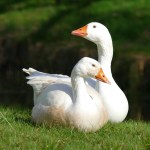
Geese wait until the wise old age of (at least) 2 before picking their lifelong mate, reports the conservation organization Ducks Unlimited. Mute swans will typically mate for life, too. If a male swan dies, the female often finds a replacement in as little as three weeks. Males will wait until the following fall or winter to find a new love, according to the Audubon Society.
Atlantic Puffins

National Geographic explains that between ages 4 and 6, Atlantic puffins “often become mates for life, finding each other at their breeding colony year after year.” They create a burrow to share and show love for their mate by tapping and rubbing their beaks together.
Termites

Some termite couples stay together for up to 20 years, but research in the journal Nature found that “divorce” can happen if a better partner comes along.
Blue-Tongued Shingleback Lizard
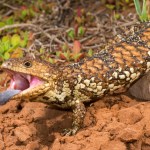
Shingleback lizards, a species of blue-tongued skink, live alone for most of the year but reunite with the same monogamous partner every mating season, according to the Australian Museum.
Marmosets

These little South American monkeys are “socially monogamous and cooperative breeders,” living in families of up to 15 individuals, according to Current Biology. Dominance within the group is established by loud yelling and posturing, a familiar sight for some boisterous human families.
Prairie Voles

NPR reports that prairie vole couples share nest-building chores and co-parent equally. To avoid becoming prey, they have to watch out for barn owls, which are also usually monogamous.
Southern Rockhopper Penguin

The secret to a lasting partnership for southern rockhopper penguins could be the fact that they only spend about a month together every year, according to a 2015 article in the journal Science.
Laysan Albatrosses

Not only do the vast majority of Laysan albatrosses mate for life, but they also head home to the same colony where they were born to breed, explains the nonprofit Oceana.
Whooping Cranes

The Florida Fish and Wildlife Conservation Commission notes that whooping cranes, mate for life (sandhill cranes do too). They can live up to 40 years, and are true snowbirds: They summer in Canada and then return south to the same nesting area year after year.
Beavers

Beavers are suspected to be part of the 3% of monogamous mammals in the wild,“ raising their young exclusively with one partner,” says Boston University scientists. Genetic research on beavers is ongoing to confirm their faithfulness.
Bald Eagles
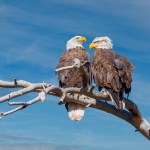
Bald eagles aren’t the largest land bird in North America (that’s the California condor, which the National Park Service says also mates for life), but they’re definitely the most famous. “In general, they mate for life. Many eagles are, in human terms, good spouses and parents — loyal to their mates and good providers for their young,” according to research published by William & Mary College. “But all eagles aren’t the same.” Though they are typically monogamous, some bald eagles have been known to cheat.
Seahorses

Living under the sea can be as rough as the dating scene, so seahorses have many reasons to play it safe by mating for life. The Smithsonian Institution reports that these delicate creatures keep their relationships strong by greeting each other every morning with a special dance that sometimes includes changing colors: “They greet each other as a way to confirm the other partner is still alive, reinforce their bond, and synchronize their reproductive cycles.”
Coyotes
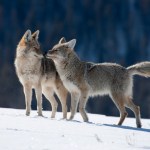
Per a 2012 study conducted by Ohio State University scientists, 100% of urban coyotes that were studied over a six-year period were found to be monogamous, never straying from their mates. “I was surprised we didn’t find any cheating going on,” said study co-author Stan Gehrt, a wildlife ecologist with the university’s School of Environment and Natural Resources. “Even with all the opportunities for the coyotes to philander, they really don’t.”
Gray Wolves
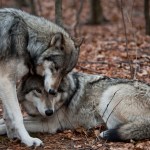
According to the Animal Ark Wildlife Sanctuary, gray wolves are monogamous and typically mate for life, though it is only the alpha pair that has “sexual rights during breeding season. Females are normally sexually mature at 2 years of age. Males are sexually mature at 2 to 3 years of age.”
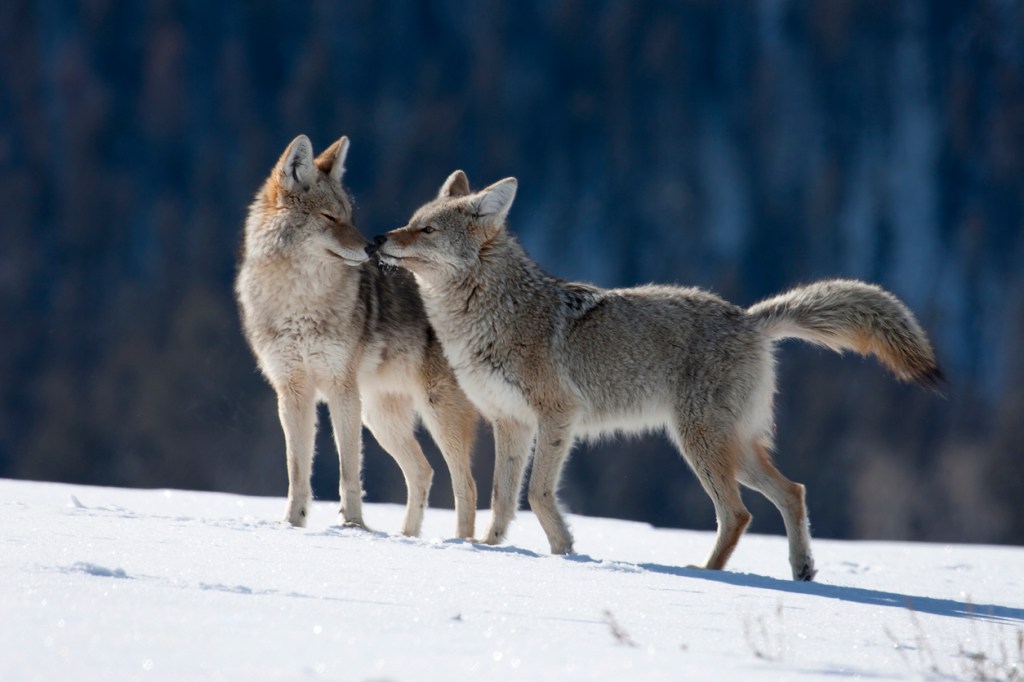



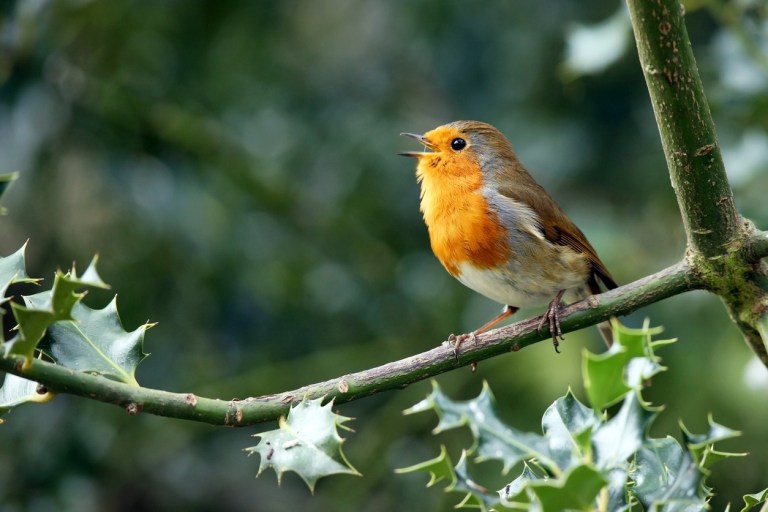







Pingback: 12 Animals That Mate for Life: True Love in the Wild - petsnpals.co
Pingback: 19 Animal Couples That Really Mate for Life (True Love in the Wild) - Exploring Animals